Developing quantifiable approaches for delineating suitable options for irrigating fallow areas during dry season—a case study from Eastern India

Authors:
Harvesting surface runoff during monsoon season for further utilization in crop production during the post-monsoon season is now becoming an effective solution to mitigate water scarcity problems. In this study, multi-criteria analysis–analytic hierarchy process (MCA–AHP)–based approach was envisaged for rainwater harvesting (RWH) zoning for a case study area, i.e., two districts of Odisha state situated in Eastern India. In spite of having a large irrigation network in the study area, major portion of these two densely populated and agriculture dominated districts remains fallow during dry seasons. Suitable locations for RWH structures such as farm pond, check dam, and percolation tanks were identified through Boolean conditions. RWH potential map was generated using different thematic layers namely land use/land cover (LU/LC), geomorphology, slope, stream density, soil type, and surface runoff. AHP-based MCA technique was used to integrate these thematic layers by assigning weights to the thematic layers and ranks to the individual theme features on 1–9 AHP Saaty’s scale, considering their relative importance on RWH potential of the study area. The Natural Resources Conservation Service-Curve Number method was used to derive surface runoff using Climate Hazards Group Infra-Red Precipitation with Station rainfall data, satellite-derived LU/LC and FAO soil maps. In comparison to single cropped areas in 48% of the total study area, only 4% area was under double and triple cropped areas during 2016–2017. Moderate runoff was observed in > 50% of the study area dominated by agricultural landscape. Nearly 40%, 25.11%, and 32.45% of the study area indicated very high, high, and moderate RWH potentials, respectively. Particularly, very high RWH potential is observed in the eastern and central portion of the study area. The use of appropriate RWH structures in less irrigated areas will facilitate multiple cropping and will substitute the use of sub-surface water harvesting practices. In these two districts, 73 check dams and 153 percolation tanks are prescribed along the 2nd- and 3rd-order streams. In coarser textured soil, nearly 306 km2 and 608 km2 areas are identified as moderate and highly suitable zones for percolation tank construction on ground, while in fine soil, around 786 km2 area is identified as suitable for farm pond construction. Majority of the suitable zones for percolation tanks is found in Jajpur district, while suitability for adoption of farm pond and check dam is more in Bhadrak district. It is expected that implementation of the prescribed RWH structures can mitigate the threats of flood, drought, soil erosion, and enhance the soil moisture and cropping intensity significantly. The use of GIS platform with the spatial layers and the methodology adopted can be updated and replicated in larger regions in a shorter time. The spatially explicit maps are offering insights to different themes, providing useful information to the water resource managers, and may improve the decision-making process.
